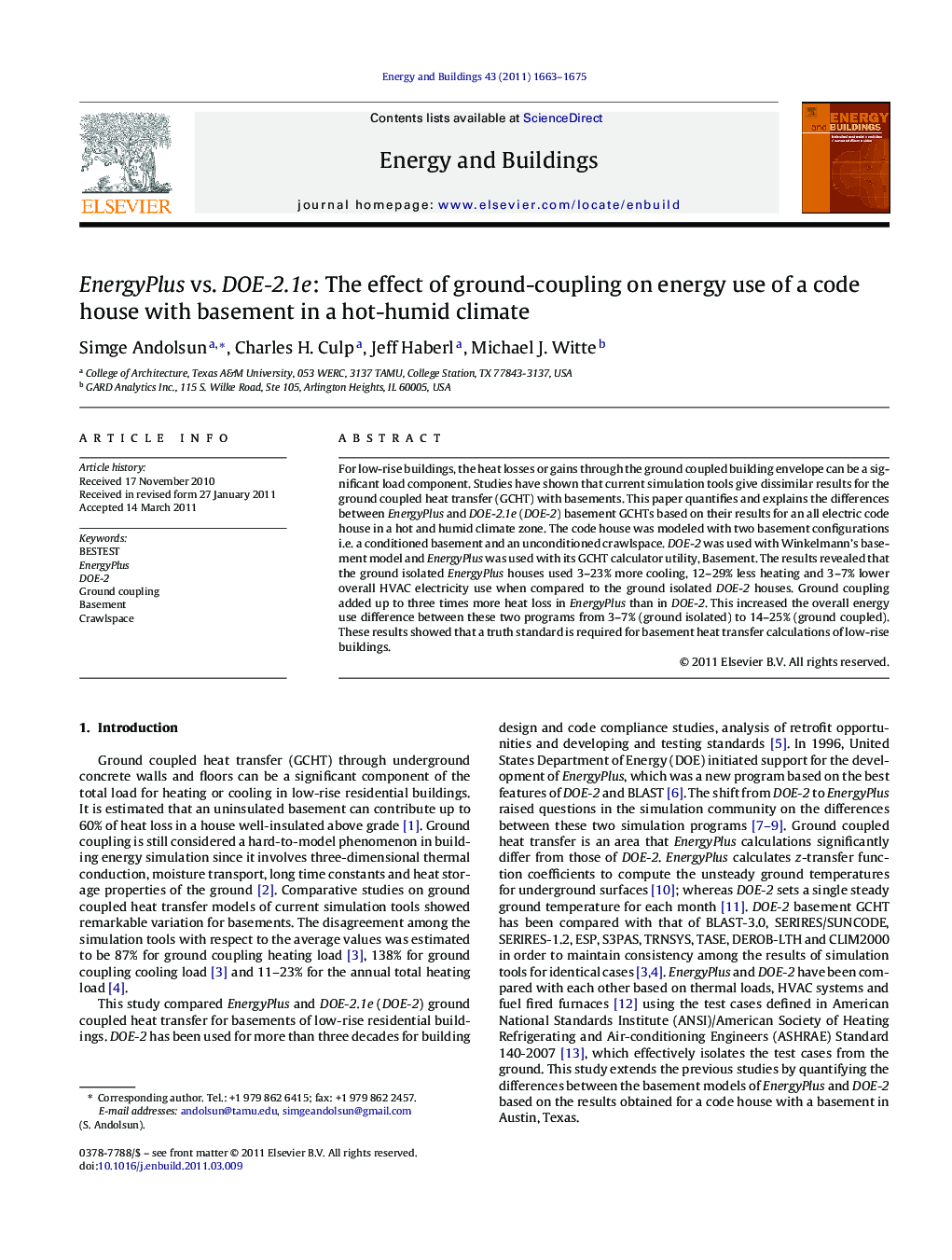| کد مقاله | کد نشریه | سال انتشار | مقاله انگلیسی | نسخه تمام متن |
|---|---|---|---|---|
| 264523 | 504103 | 2011 | 13 صفحه PDF | دانلود رایگان |

For low-rise buildings, the heat losses or gains through the ground coupled building envelope can be a significant load component. Studies have shown that current simulation tools give dissimilar results for the ground coupled heat transfer (GCHT) with basements. This paper quantifies and explains the differences between EnergyPlus and DOE-2.1e (DOE-2) basement GCHTs based on their results for an all electric code house in a hot and humid climate zone. The code house was modeled with two basement configurations i.e. a conditioned basement and an unconditioned crawlspace. DOE-2 was used with Winkelmann's basement model and EnergyPlus was used with its GCHT calculator utility, Basement. The results revealed that the ground isolated EnergyPlus houses used 3–23% more cooling, 12–29% less heating and 3–7% lower overall HVAC electricity use when compared to the ground isolated DOE-2 houses. Ground coupling added up to three times more heat loss in EnergyPlus than in DOE-2. This increased the overall energy use difference between these two programs from 3–7% (ground isolated) to 14–25% (ground coupled). These results showed that a truth standard is required for basement heat transfer calculations of low-rise buildings.
► We model a low-rise code house with a basement in Austin using EnergyPlus and DOE-2.
► We use DOE-2 with Winkelmann's method and EnergyPlus with its Basement preprocessor.
► We compare EnergyPlus and DOE-2 heat losses from basements and crawl spaces.
► EnergyPlus calculated three times more heat loss to the ground than DOE-2 did.
► A truth standard for basement heat transfer modeling needs to be developed.
Journal: Energy and Buildings - Volume 43, Issue 7, July 2011, Pages 1663–1675